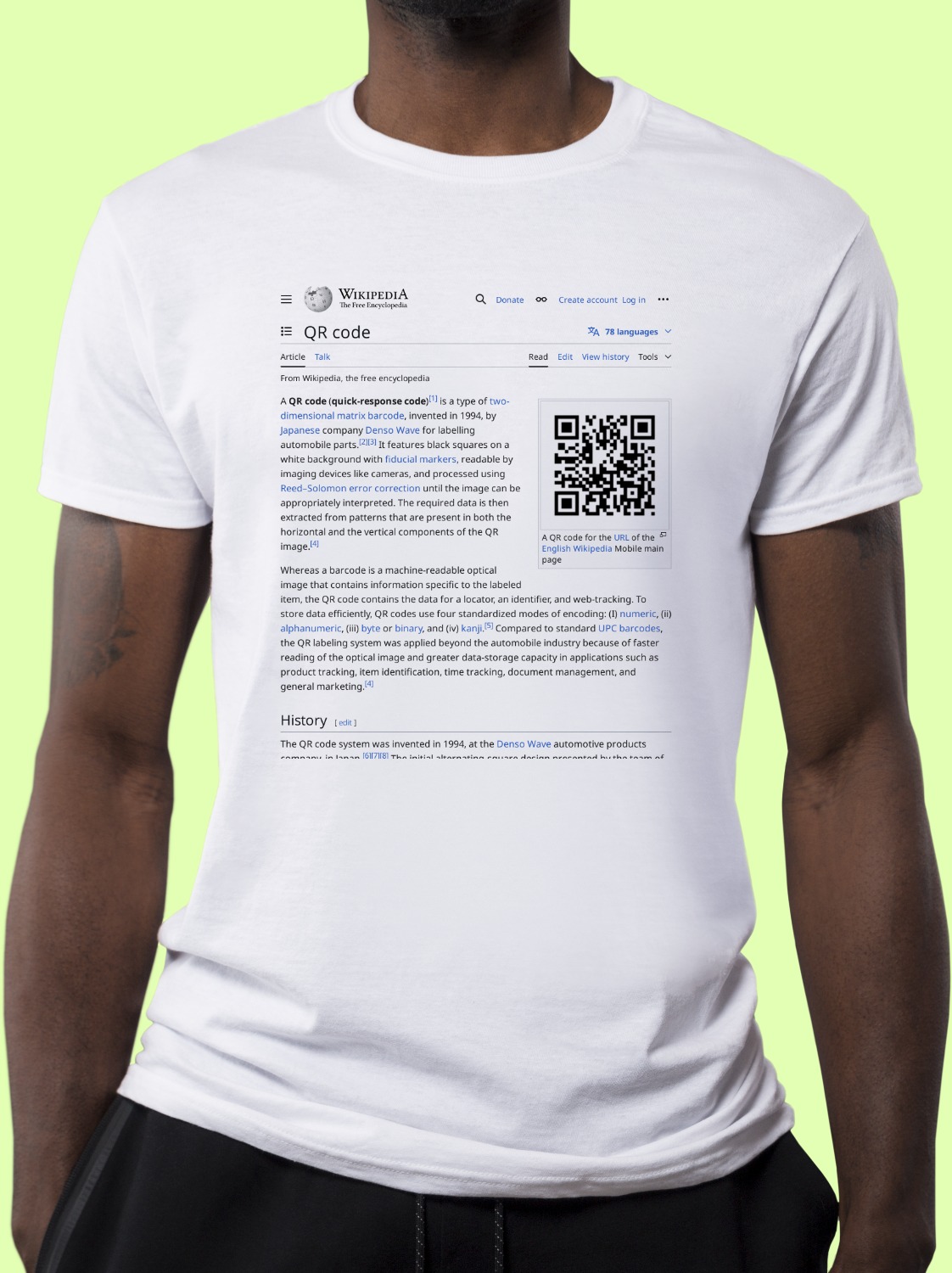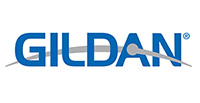
QR code Shirt
A classic cotton tee emblazoned with the Wikipedia article on QR code ↗.
cotton tee emblazoned with the Wikipedia article on QR code ↗.- Preshrunk jersey knit
- Seamless double-needle 2.2 cm collar
- Taped neck and shoulders
- Tear away label
- Double-needle sleeve and bottom hems
- Quarter-turned to eliminate centre crease
A QR code, short for quick-response code, is a type of two-dimensional matrix barcode invented in 1994 by Masahiro Hara of the Japanese company Denso Wave for labelling automobile parts. It features black squares on a white background with fiducial markers, readable by imaging devices like cameras, and processed using Reed–Solomon error correction until the image can be appropriately interpreted. The required data is then extracted from patterns that are present in both the horizontal and the vertical components of the QR image.
Whereas a barcode is a machine-readable optical image that contains information specific to the labeled item, the QR code contains the data for a locator, an identifier, and web tracking. To store data efficiently, QR codes use four standardized modes of encoding: numeric, alphanumeric, byte or binary, and kanji. Compared to standard UPC barcodes, the QR labeling system was applied beyond the automobile industry because of faster reading of the optical image and greater data-storage capacity in applications such as product tracking, item identification, time tracking, document management, and general marketing.
About Wikishirt
Wikishirt is a retail experiment that lets you buy a shirt with any Wikipedia Article printed on it. There are over 5 million Wikipedia articles, so we have over 5 million shirts.Check out our homepage for random featured shirts and more!